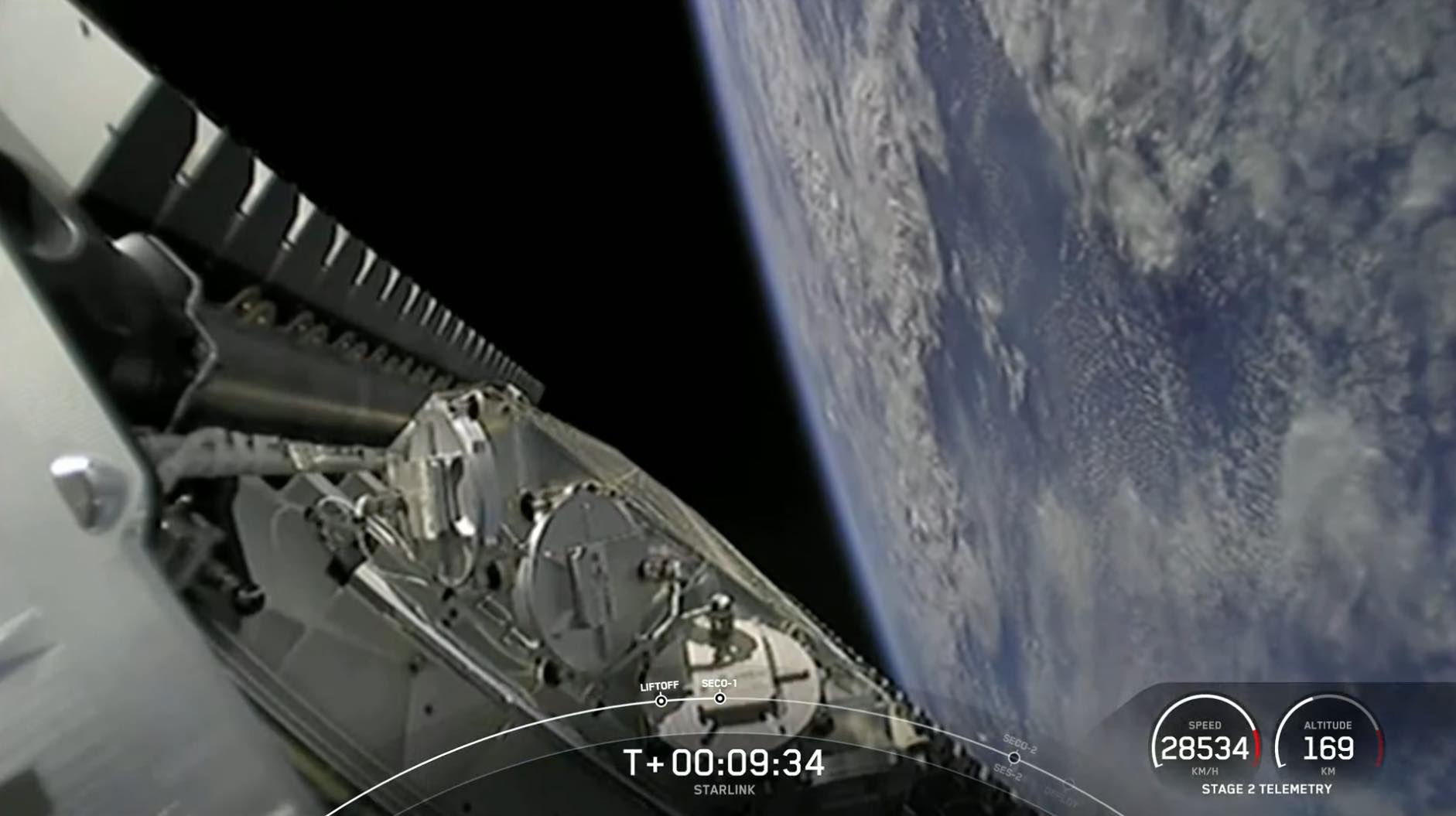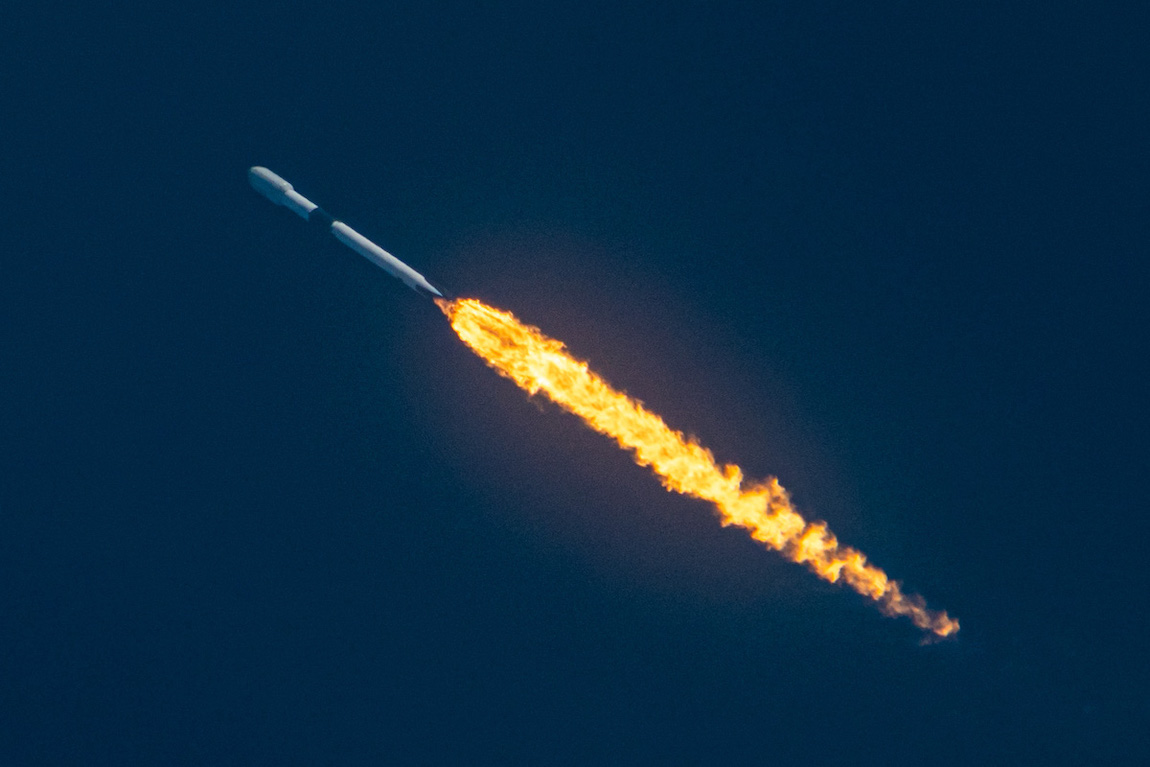
Forecasters predict a 50-50 chance of good weather at Cape Canaveral for launch of SpaceX’s next batch of Starlink internet satellites Sunday on a Falcon 9 rocket.
Fifty-three more Starlink internet satellites are packed inside the nose cone of a Falcon 9 rocket for liftoff at 10:20 a.m. EDT (1420 GMT) Sunday from pad 40 at Cape Canaveral Space Force Station. The launch will mark the 31st Falcon 9 flight of the year, tying the total number of Falcon 9 launches SpaceX performed in 2021.
The official weather forecast from the U.S. Space Force’s 45th Weather Squadron predicts isolated rain showers and a cloudy sky at launch time Sunday. The main weather risks for launch are with thick clouds, anvil clouds, and cumulus clouds, which could pose a risk for rocket-triggered lightning as the Falcon 9 climbs through the atmosphere.
The weather forecast for Monday morning is better, with an 80% chance of good conditions for liftoff.
SpaceX is on pace to nearly double its record launch rate set last year, and is averaging more than one launch per week since the beginning of January. Seventeen of SpaceX’s 30 Falcon 9 launches so far this year have been dedicated missions to deploy satellites for the company’s own Starlink internet network.
The launch Sunday, designated Starlink 4-22, will follow a similar profile to most of SpaceX’s recent Starlink missions, with the Falcon 9’s guidance computer targeting an elliptical orbit ranging in altitude between 144 miles and 210 miles (232-by-338 kilometers). The two-stage rocket will launch toward the northeast to place the 53 Starlink satellites into an orbit inclined 53.2 degrees to the equator.
Nine kerosene-fueled Merlin 1D engines will throttle up to full power to propel the 229-foot-tall (70-meter) Falcon 9 rocket off the pad at Cape Canaveral.
The Falcon 9’s first stage will shut down about two-and-a-half minutes after liftoff, beginning an arcing trajectory toward a landing on SpaceX’s drone ship “Just Read the Instructions” parked in the Atlantic Ocean about 400 miles (630 kilometers) northeast of Cape Canaveral.
The booster — tail number B1051 — flying Sunday is one of the oldest in SpaceX’s fleet of reusable rockets. It debuted in March 2019 with the first unpiloted test flight of SpaceX’s Crew Dragon spacecraft. Since then, the booster has launched Canada’s Radarsat Constellation Mission, SiriusXM’s SXM 7 radio broadcasting satellite, and nine Starlink missions.
B1051 will become the third booster in SpaceX’s inventory to reach the 13-flight milestone. SpaceX has certified Falcon 9 boosters for at least 15 missions, an extension from the original certification of 10 flights.

The Falcon 9’s upper stage will burn its single Merlin until nearly T+plus 9 minutes, then coast across the North Atlantic Ocean before releasing the 53 Starlink satellites at T+plus 15 minutes, 28 seconds.
The upper stage will spin up before deploying the Starlink satellites. The flat-packed spacecraft, each with a mass of more than a quarter-ton, will fly free of the Falcon 9 after the rocket jettisons retention rods that keep the satellites firmly attached to the spacecraft during ascent.
Once free of the rocket, the satellites will spread out, unfurl solar panels, and switch on their krypton-fueled ion engines to climb to an altitude of 335 miles (540 kilometers).
The Starlink satellites provide broadband internet service to SpaceX customers around the world.
With the 53 satellites launching Sunday, SpaceX will have shot 2,858 Starlink spacecraft into orbit, including prototypes and satellites already decommissioned. SpaceX has more than 2,500 Starlink satellites currently working in space, either in service or maneuvering to their final operating orbits, according to Jonathan McDowell, an astrophysicist and expert tracker of spaceflight activity.
That’s about six times as many satellites as the second-largest fleet of spacecraft in orbit — the constellation of 428 internet satellites owned by OneWeb.
SpaceX’s first-generation network will consist of 4,408 operational satellites flying in five orbital “shells” at different inclinations. The Federal Communications Commissions has authorized SpaceX to operate as many Starlink 12,000 satellites, and SpaceX has signaled it could launch more if it sees enough commercial demand.
Sunday’s launch will be the fourth SpaceX mission of July, following previous Falcon 9/Starlink launches from Cape Canaveral on July 7 and from Vandenberg Space Force Base in California on July 10. A Falcon 9 rocket launched from the Kennedy Space Center on Thursday with Dragon cargo ship heading to the International Space Station.
Email the author.
Follow Stephen Clark on Twitter: @StephenClark1.
